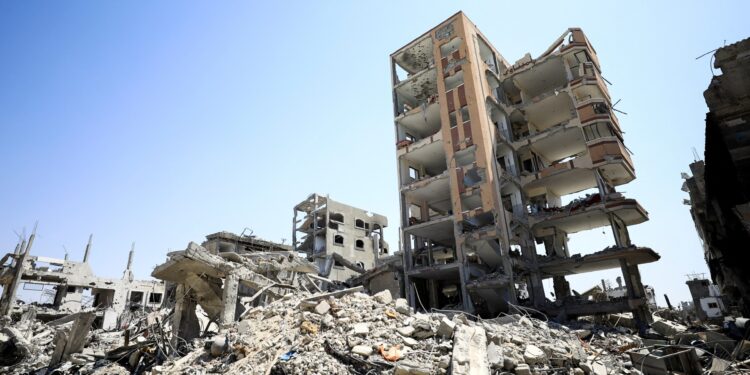The United Nations said on Friday that about two-thirds of buildings in the Gaza Strip have been damaged or destroyed since the start of Israel’s war on Gaza, based on satellite images.
The United Nations Satellite Analysis Agency (UNOSAT) announced in a statement that “the latest damage assessment reveals that 151,265 buildings were damaged in the Gaza Strip.”
This estimate is based on images collected on July 6, which were compared with previous images taken in May 2023, according to Agence France-Presse.
Of the damaged buildings, “30% are destroyed, 12% are severely damaged, 36% are moderately damaged, and 20% are likely damaged, representing about 63% of the total buildings in the area,” UNOSAT explained.
The agency added that “the impact on civilian infrastructure is clear, as thousands of homes and basic facilities have been damaged.”
The United Nations estimates the volume of rubble resulting from the war in Gaza at about 41.9 million tons.
This is 14 times higher than the total amount of debris and rubble from other wars on Gaza since 2008, according to UNOSAT.
The analysis estimates that there are 114 kilograms of rubble per square meter in the Gaza Strip.
The death toll from the Israeli aggression on the Gaza Strip has risen to 39,480 martyrs and 91,128 wounded since October 7.
Gaza Strip losses in billions
The government media office in the Gaza Strip announced yesterday, Thursday, that the Israeli war led to direct losses in the Strip amounting to 33 billion dollars.
The office stated – in a statement on the occasion of the 300th day of the Israeli war on Gaza – that the besieged Strip is facing a deep and complex humanitarian crisis that has affected all aspects of life, as the direct initial losses from the genocidal war have exceeded 33 billion dollars so far, in addition to tens of billions of dollars in indirect losses.
The Palestinian statement described the humanitarian situation in Gaza as “catastrophic in every sense of the word, as the humanitarian crisis is worsening and deepening in an unprecedented manner.”
He explained that “Israel’s policies of closing the crossings and preventing the entry of aid, medicines, goods and merchandise have exacerbated the food crisis and reinforced the policy of starvation and malnutrition, especially against thousands of children.”
The government office added, “The occupation’s crime of closing the crossings caused a real humanitarian disaster by preventing more than 25,000 wounded and sick people from traveling to receive treatment.”



